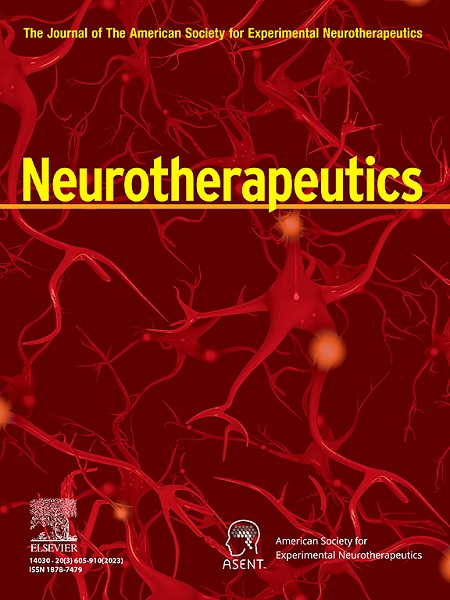Targeting the Hippo pathway in Schwann cells ameliorates peripheral nerve degeneration via a polypharmacological mechanism
IF 5.6
2区 医学
Q1 CLINICAL NEUROLOGY
引用次数: 0
Abstract
Peripheral neuropathies (PNs) are common diseases in elderly individuals characterized by Schwann cell (SC) dysfunction and irreversible Wallerian degeneration (WD). Although the molecular mechanisms of PN onset and progression have been widely studied, therapeutic opportunities remain limited. In this study, we investigated the pharmacological inhibition of Mammalian Ste20-like kinase 1/2 (MST1/2) by using its chemical inhibitor, XMU-MP-1 (XMU), against WD. XMU treatment suppressed the proliferation, dedifferentiation, and demyelination of SCs in models of WD in vitro, in vivo, and ex vivo. As a downstream mediator of canonical and noncanonical Hippo/MST1 pathway activation, the mature microRNA (miRNA) let-7b and its binding partners quaking homolog (QKI)/nucleolin (NCL) modulated miRNA-mediated silencing of genes involved in protein transport. Hence, direct phosphorylation of QKI and NCL by MST1 might be critical for WD onset and pathogenesis. Moreover, p38α/mitogen-activated protein kinase 14 (p38α) showed a strong affinity for XMU, and therefore, it may be an alternative XMU target for controlling WD in SCs. Taken together, our findings provide new insights into the Hippo/MST pathway function in PNs and suggest that XMU is a novel multitargeted therapeutic for elderly individuals with PNs.
以许旺细胞中的希波通路为靶点,通过多药理学机制改善周围神经变性。
周围神经病(PNs)是老年人常见的疾病,以许旺细胞(SC)功能障碍和不可逆的沃勒氏变性(WD)为特征。尽管人们对 PN 发病和进展的分子机制进行了广泛研究,但治疗机会仍然有限。在这项研究中,我们利用哺乳动物 Ste20 样激酶 1/2(MST1/2)的化学抑制剂 XMU-MP-1 (XMU),研究了对 WD 的药理抑制作用。在体外、体内和体外WD模型中,XMU治疗抑制了SCs的增殖、去分化和脱髓鞘。作为规范和非规范Hippo/MST1通路激活的下游介质,成熟的microRNA(miRNA)let-7b及其结合伙伴quaking homolog(QKI)/nucleolin(NCL)调节了miRNA介导的参与蛋白质转运的基因沉默。因此,MST1对QKI和NCL的直接磷酸化可能是WD发病和致病的关键。此外,p38α/介原激活蛋白激酶14(p38α)与XMU有很强的亲和力,因此,它可能是XMU控制SC中WD的另一个靶点。综上所述,我们的研究结果提供了关于PNs中Hippo/MST通路功能的新见解,并表明XMU是一种治疗老年PNs的新型多靶点疗法。
本文章由计算机程序翻译,如有差异,请以英文原文为准。
求助全文
约1分钟内获得全文
求助全文
来源期刊

Neurotherapeutics
医学-神经科学
CiteScore
11.00
自引率
3.50%
发文量
154
审稿时长
6-12 weeks
期刊介绍:
Neurotherapeutics® is the journal of the American Society for Experimental Neurotherapeutics (ASENT). Each issue provides critical reviews of an important topic relating to the treatment of neurological disorders written by international authorities.
The Journal also publishes original research articles in translational neuroscience including descriptions of cutting edge therapies that cross disciplinary lines and represent important contributions to neurotherapeutics for medical practitioners and other researchers in the field.
Neurotherapeutics ® delivers a multidisciplinary perspective on the frontiers of translational neuroscience, provides perspectives on current research and practice, and covers social and ethical as well as scientific issues.
 求助内容:
求助内容: 应助结果提醒方式:
应助结果提醒方式:


